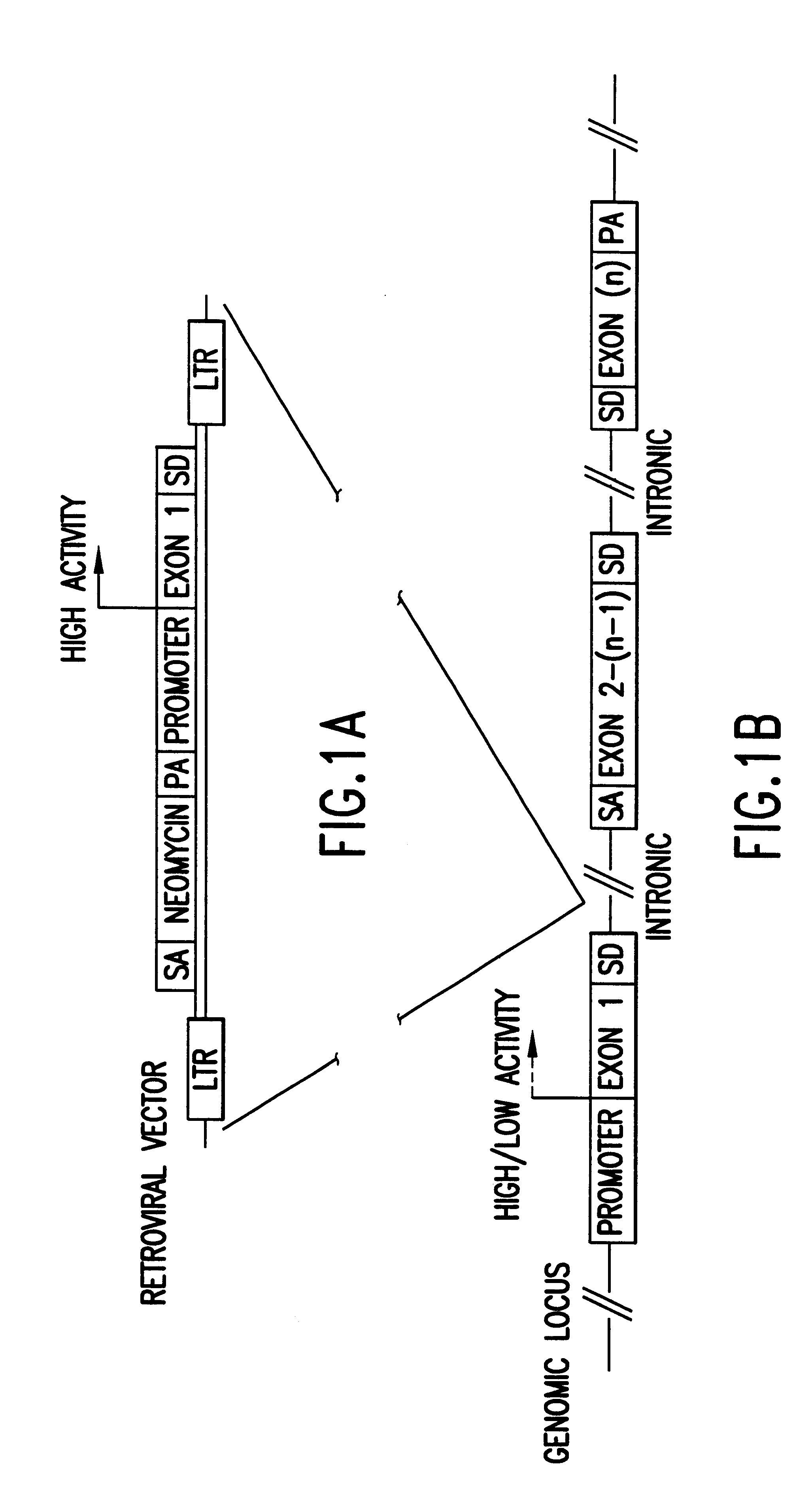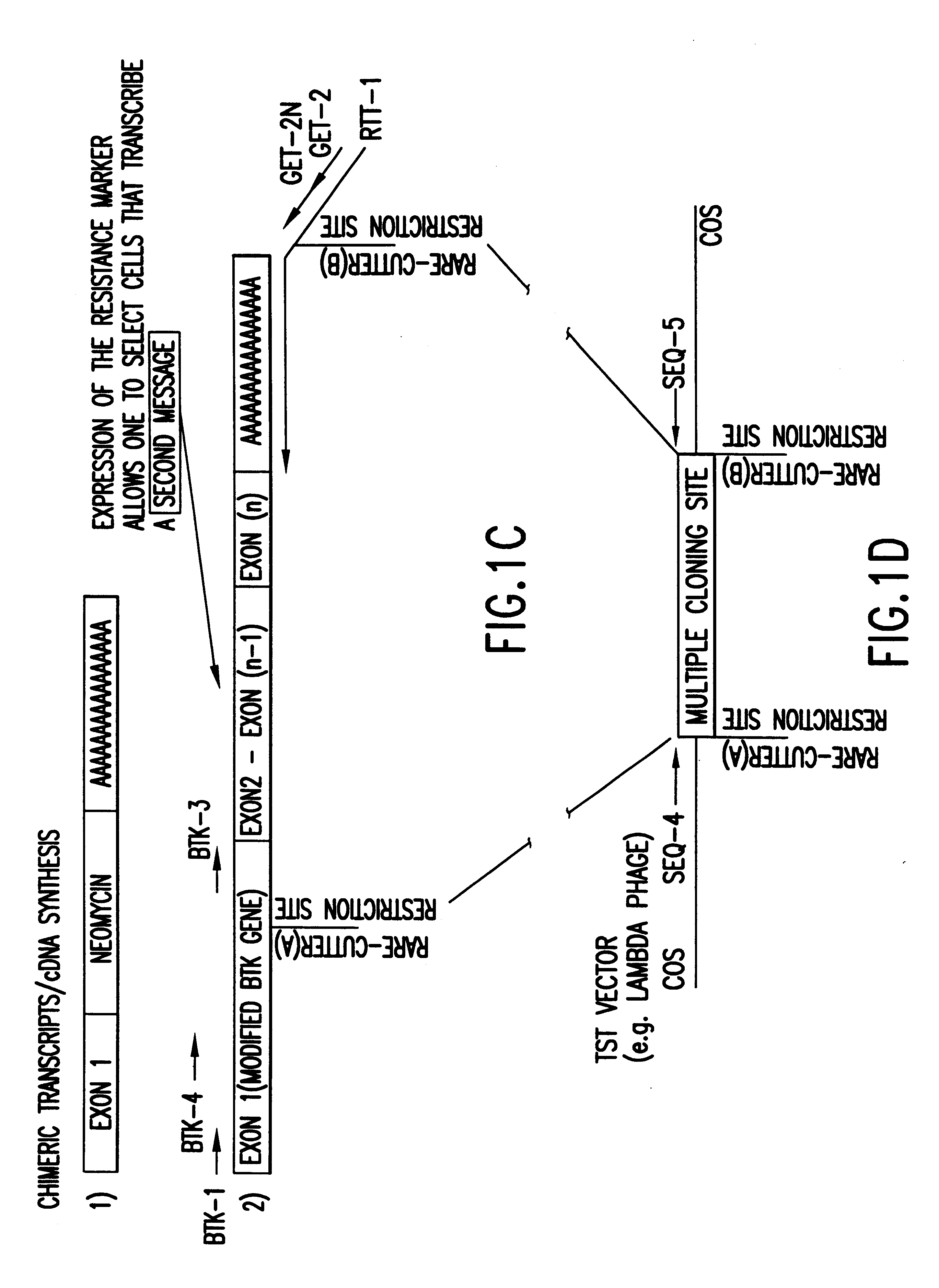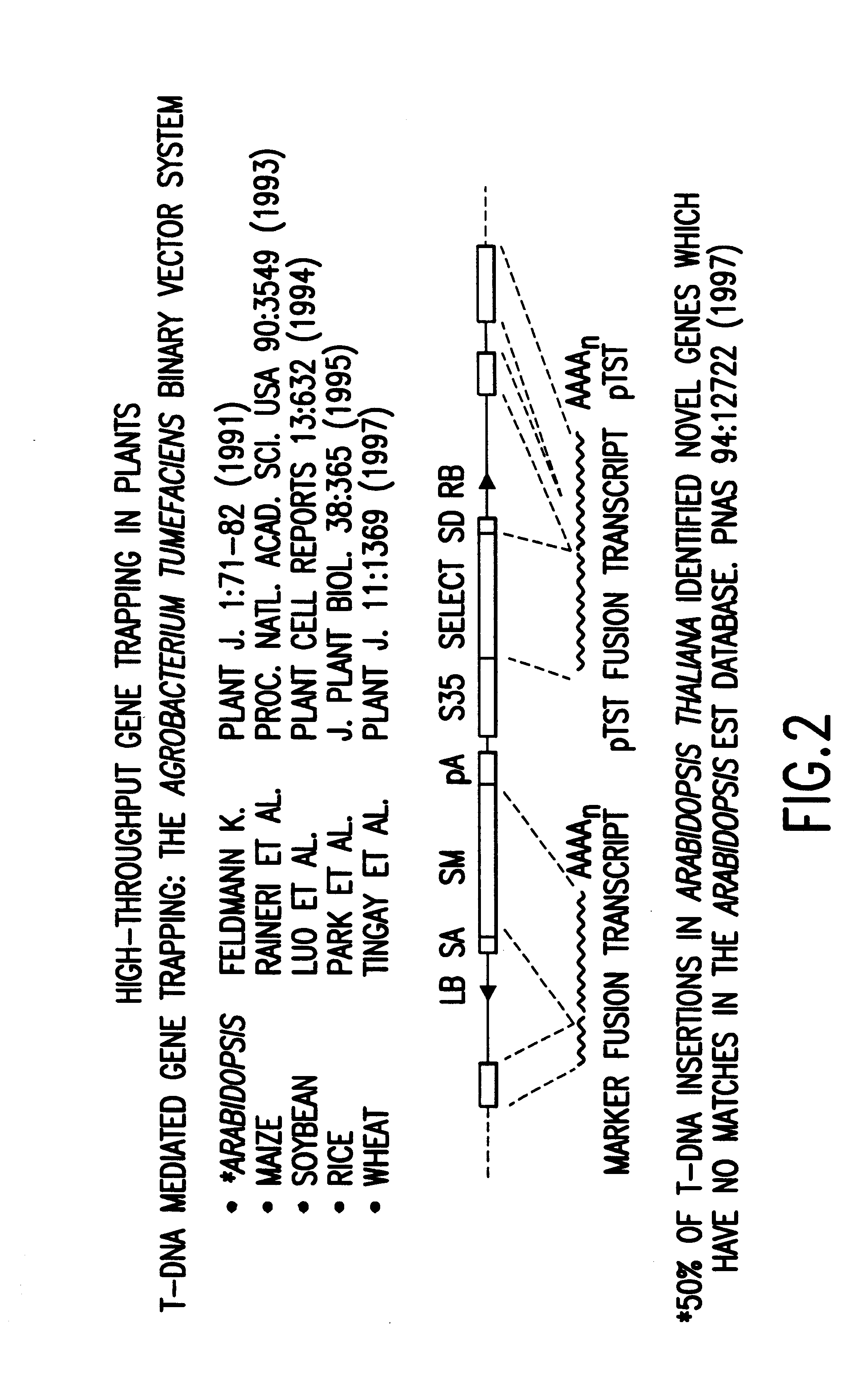Construction of normalized cDNA libraries from eucaryotic cells
a cdna library and eukaryotic cell technology, applied in the field of complex cdna libraries generated from eukaryotic cells, can solve the problems of ineffective representation of current cdna libraries, lack of cdna sources from specific tissue and developmental expression profiles, and inherently limited est paradigms, so as to reduce the burden of sequencing duplicative cdnas
- Summary
- Abstract
- Description
- Claims
- Application Information
AI Technical Summary
Benefits of technology
Problems solved by technology
Method used
Image
Examples
Embodiment Construction
The present invention relates to normalized "gene trapped" CDNA libraries that provide an enhanced representation of the coding regions, or genes, present within a given cell, cell line, tissue, plant, or animal. The methods used to generate the described libraries exploit several features of the biology of eukaryotic cells and viruses. To produce the described normalized cDNA library, an exogenously added promoter element (incorporated into an appropriately engineered recombinant vector / construct) is introduced into a target cell, tissue, or animal, where the promoter element subsequently integrates into the cellular genome in a nonspecific, or essentially random, manner. For the purposes of the present disclosure, a "normalized" library is characterized as a collection of distinct sequences that are derived from transcripts expressed, or substantially expressed by one or more common exogenously added promoter elements.
Typically, the exogenous promoter element is introduced as part...
PUM
| Property | Measurement | Unit |
|---|---|---|
| concentration | aaaaa | aaaaa |
| pH | aaaaa | aaaaa |
| pH | aaaaa | aaaaa |
Abstract
Description
Claims
Application Information
 Login to View More
Login to View More - R&D
- Intellectual Property
- Life Sciences
- Materials
- Tech Scout
- Unparalleled Data Quality
- Higher Quality Content
- 60% Fewer Hallucinations
Browse by: Latest US Patents, China's latest patents, Technical Efficacy Thesaurus, Application Domain, Technology Topic, Popular Technical Reports.
© 2025 PatSnap. All rights reserved.Legal|Privacy policy|Modern Slavery Act Transparency Statement|Sitemap|About US| Contact US: help@patsnap.com



